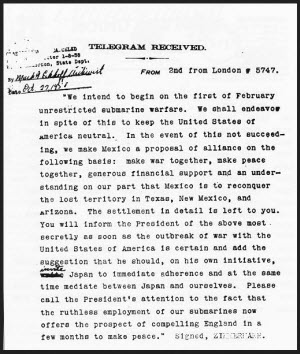|
|||||||||
|
|
Secrets of World War 1
World War 1 MinesWorld War 1 began as a war of movement and maneuvering, with the Germans hoping to knock France out of the war quickly by advancing through Belgium and seizing Paris. But as French resistance stiffened, the Western front fossilized into trench warfare. The front lines became largely static.The trench systems and fortifications on both sides were so strongly defended that it was often impossible to break through, even when attempts were made to soften up the defences with poison gas or heavy artillery barrages. Hundreds of thousands of men were sacrificed in attempts to break through the other side's line of trenches. Often the result was a territorial gain of only a few yards, at the cost of thousands dead and wounded. The carnage that characterized fighting on the Western front once the trenches had become well developed was incredible. As a result both sides looked for ways to break through enemy trenches where artillery bombardment and infantry assaults would not work. One method was to build tunnels or mines beneath the enemy's trenches and then pack underground chambers with enormous amounts of high explosives. These explosives would then be detonated in conjunction with an above-ground offensive. The goal was to completely annihilate the enemy defence works. To counter these mining efforts both sides used microphones to detect the sound of underground mining and employed counter mining techniques designed to cave in the enemy mining tunnels or even break into the enemy tunnel and kill the miners. The most ambitious and successful mining operation was carried out by the allies during the Messines Ridge Offensive, near Ypres, in 1917. The plan was to build 25 enormous mines beneath the German trenches, and detonate about 1 million tons of high explosives just as the Allies launched their offensive. The plan worked an 19 of the 25 mines went off simultaneously, vaporizing the German trenches and killing at least 6,000 German soldiers. The allied offensive in this sector was a success. It is an indication of just how static the trench warfare had become that the allies began building these mines in January 1916 and did not complete them until the summer of 1917. In the meantime, the front had barely moved. The resulting explosion was so large that the sound was hear in London and registered as an earthquake on seismographs in Switzerland. However six of the mines did not go off and the explosives were abandoned in place. Their locations were eventually forgotten. One enormous store of explosives has recently been located underneath a modern farmhouse. The farm family that lives there sleeps on top of about 22 tons of explosives. German Secret Operations Against the United States The Zimmerman Telegram After Being Decoded And Translated By American Intelligence During world war 1 German agents sought to embroil the United States in a war with Mexico in order to make sure that the U.S would be too preoccupied in its own backyard to consider going to war in Europe. German agents funded and encouraged Mexican rebels including Pancho Villa, who raided the Columbus, New Mexico, in 1916. This resulted in an American punitive expedition into Mexico by General Pershing later that year. On January 16, 1917, the Foreign Secretary of the German Empire, Arthur Zimmermann, sent a coded telegram to the German ambassador in Mexico, Heinrich von Eckardt, at the height of World War I. The telegram, which came to be known as the Zimmerman Telegram instructed the German ambassador to negotiate a military alliance with Mexico against the United States in exchange for the land that Mexico had lost to the United States. Under this proposal Mexico would have regained Texas, California, New Mexico and other border areas. Unfortunately for the Germans the Zimmerman Telegram was intercepted by British intelligence and a copy promptly provided to the Americans. A copy of the Zimmerman telegram, which is reprinted below, was quickly published throughout the United States. The Zimmerman TelegramOn the first of February, we intend to begin unrestricted submarine warfare. In spite of this, it is our intention to endeavour to keep the United States of America neutral.In the event of this not succeeding, we propose an alliance on the following basis with Mexico: That we shall make war together and make peace together. We shall give generous financial support, and an understanding on our part that Mexico is to reconquer the lost territory in New Mexico, Texas, and Arizona. The details of settlement are left to you. You are instructed to inform the President [of Mexico] of the above in the greatest confidence as soon as it is certain that there will be an outbreak of war with the United States and suggest that the President, on his own initiative, invite Japan to immediate adherence with this plan; at the same time, offer to mediate between Japan and ourselves. Please call to the attention of the President that the ruthless employment of our submarines now offers the prospect of compelling England to make peace in a few months. The result of the Zimmerman telegram was widespread anger at Germany and increased American support for intervention on the conflict. Within months the United States was at war with Germany. Mexico declined the offer, concluding that it could not win a war with the United States. It was one of the greatest blunders of German foreign policy. | ||||||||
